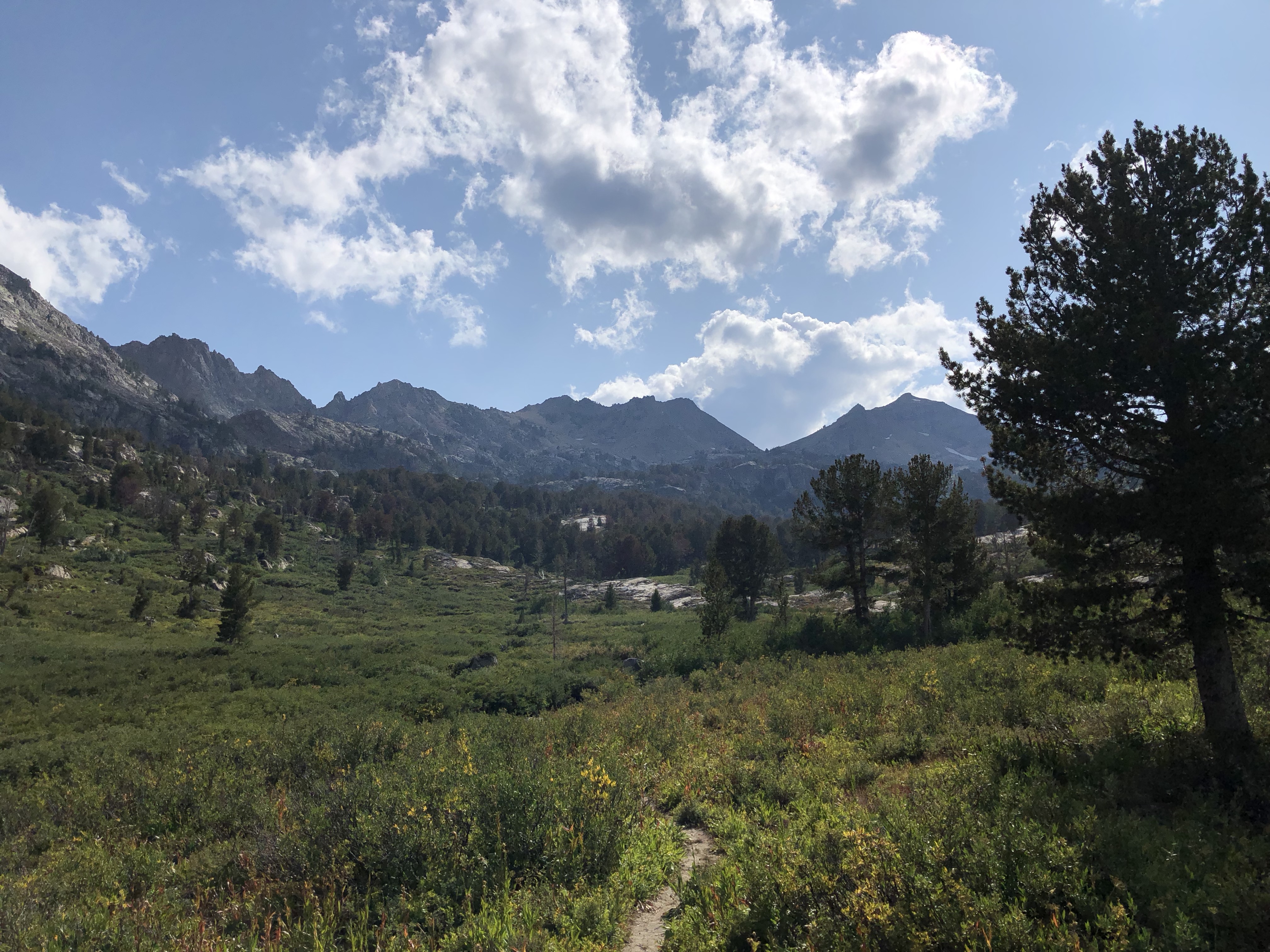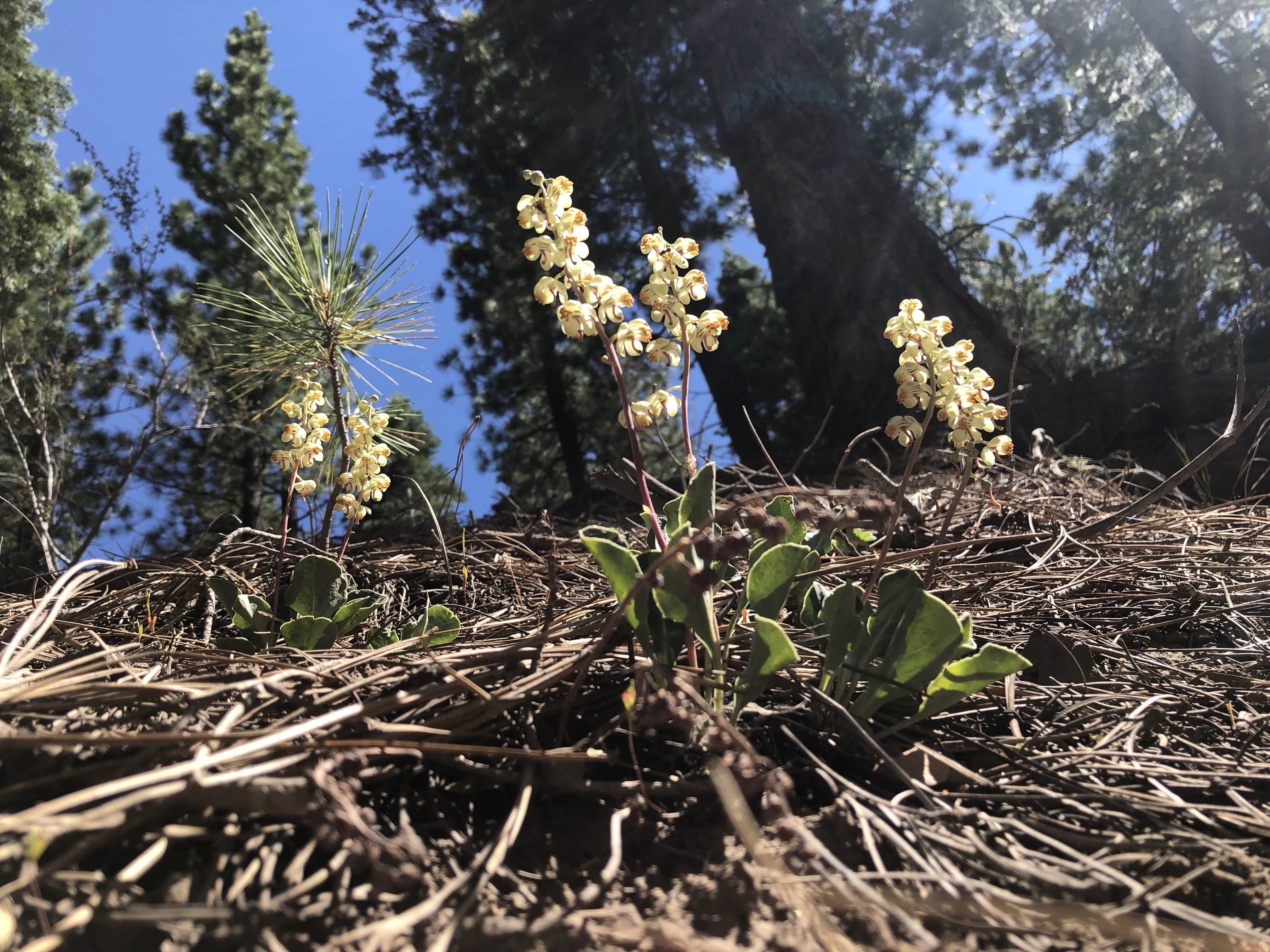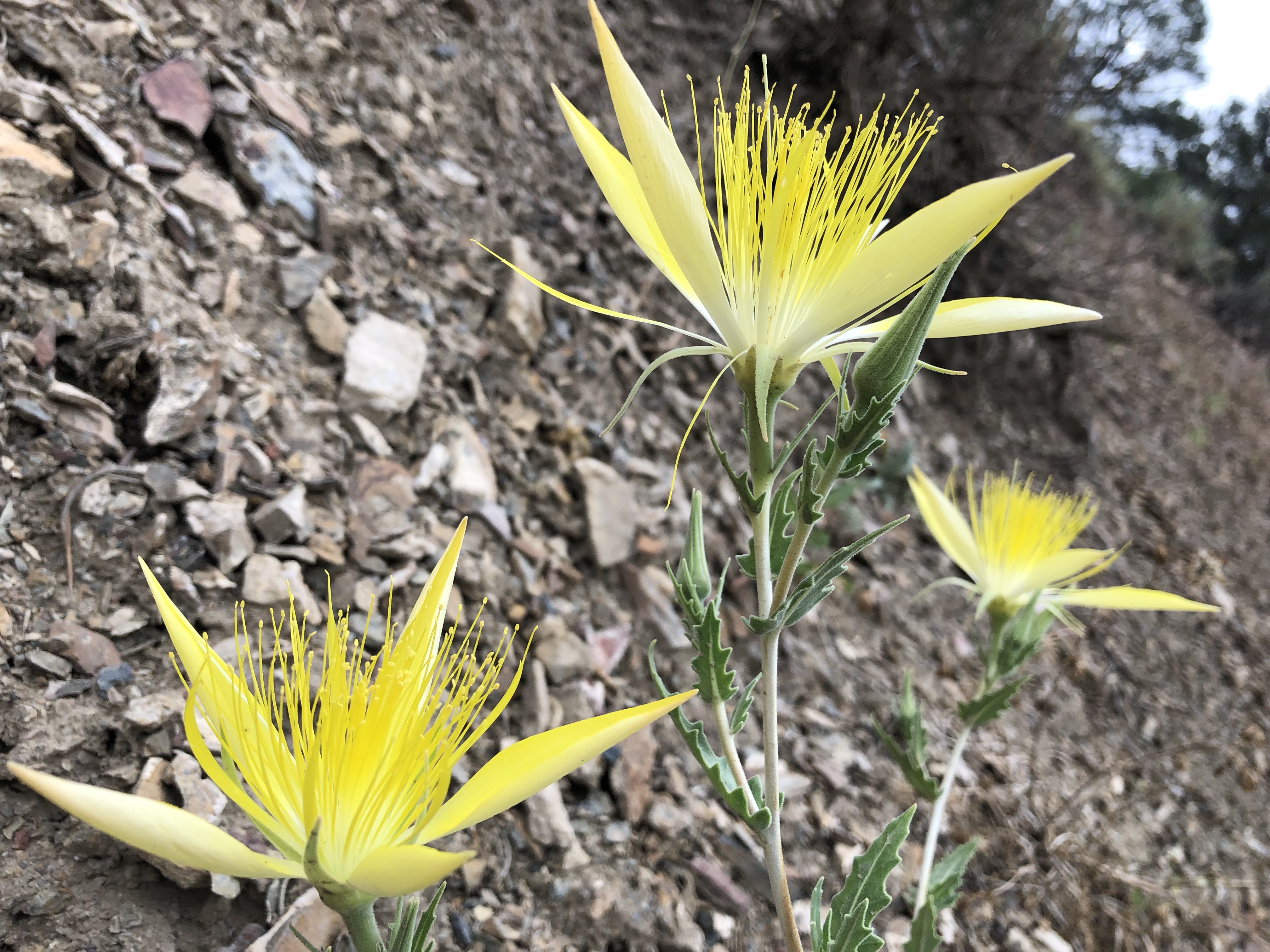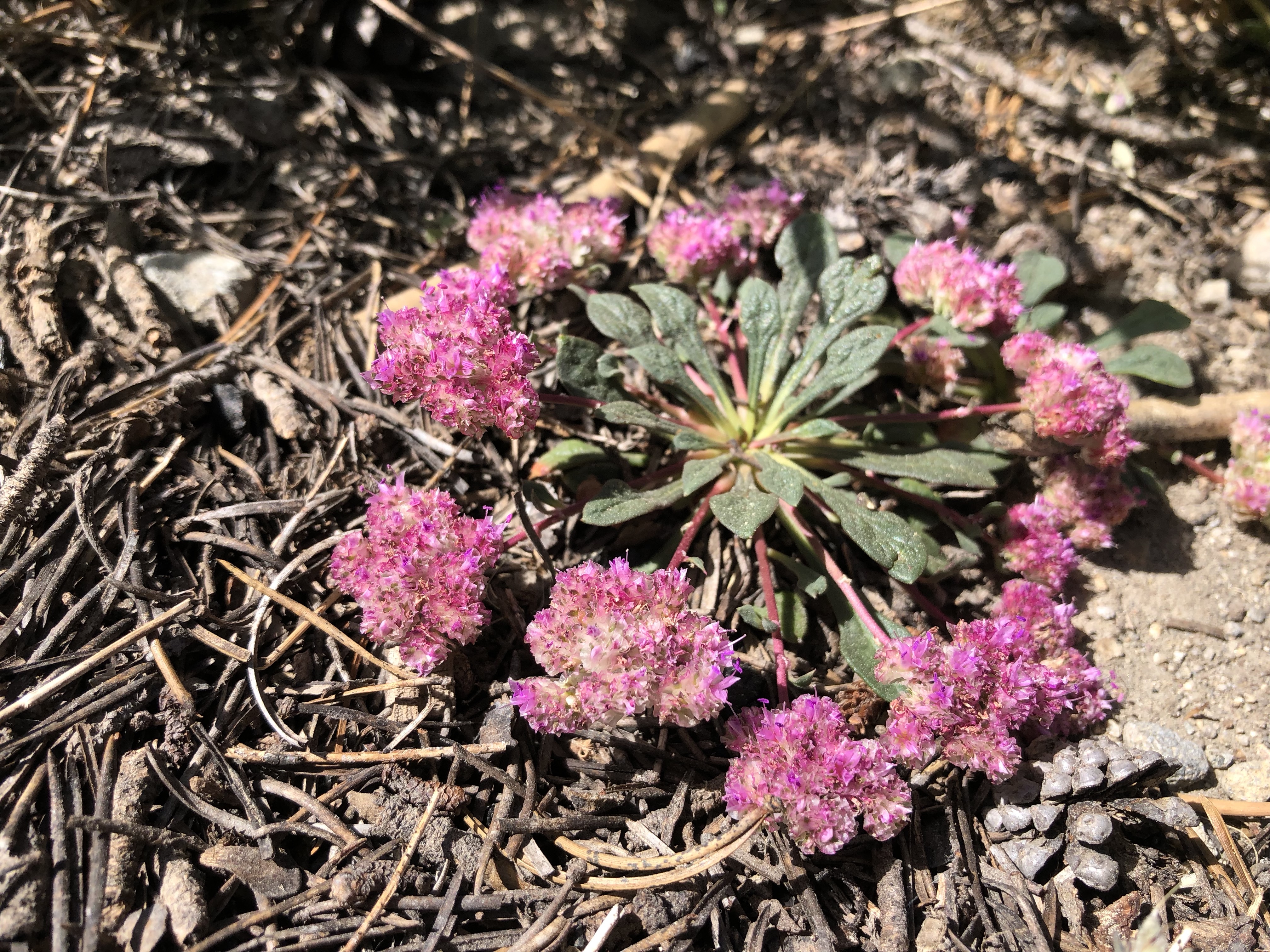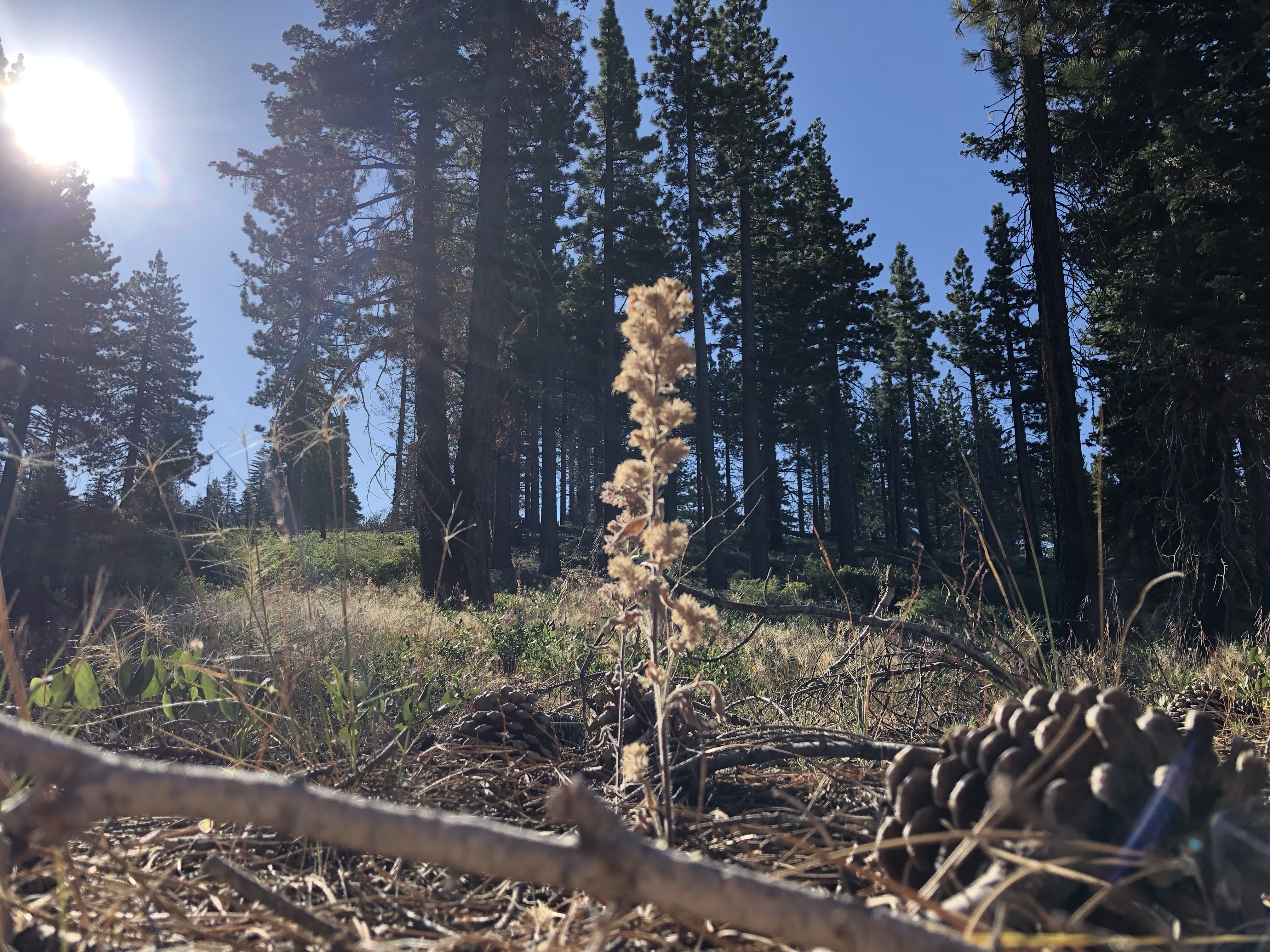In recalling the goodbye’s of my past, this one is received unwelcome, unwanted, and unfortunate. Never before can I call back to a parting of ways that even the thought is difficult to accept.
Some adapt to change at a pace far quicker than some, others need heavy investment of time before they gain traction. For me I’ve found, especially in this exact moment, that the duration of the CLM positions is the precise amount of time I need to not only get in, but enjoy the groove. 5 and a half months of myself invested somewhere I’ve never been – somewhere that 5 and a half months ago I never pictured myself becoming enamored with.
Bend speaks for itself. In more ways than can be stated, it’s more than I expected. But as they’ve all supposedly said, it’s not the place, it’s the company. Well, they were right.
I can’t begin to claim I found myself out here without giving unwavering credit to the folks I worked with. My supervisor, coworkers, peers, etc, all quickly become synonymous with none other than – friend. I can say I’ve never developed such a favorable dynamic in any prior work environment. And that is said with confidence.
My time at Bend Seed Extractory has provided invaluable experiences, opportunities, and responsibilities – all of which, I believe, leave me a greater asset.
Saying Goodbye
Greetings!
With all of the experiences I’ve had and the people I’ve met over the last 6 months, it is a wonder why I struggle to find the right words in my final blog post. I believe that my reluctance to leave and unwillingness to accept that this is my last day is the main reason.
Just yesterday, I was in the office making sure that a set of herbarium vouchers was going to be shipped properly. Even then, it felt like a long time before I would have to leave the field office and the country that I’ve grown so accustomed to in the previous months. Earlier this week, one of the range staff brought me to the field to show the air quality monitoring acid deposition and mercury levels in the water around the foothills and southern Wind River Mountains that he does on a regular basis. It is amazing to see such modern technology in equally remote areas–some of which are entirely solar powered (and have been since the 80s). As shown in the picture, there is a sensor that, when prompted by moisture, lifts a lid on and allows precipitation into a container. Data from this sensor and the corresponding precipitation is stored in a nearby computer (the cylindrical container with the hoop of flapping pieces around it). This data is then collected via a USB drive or Bluetooth! I have no idea what I expected air quality monitoring to look like, but my mind was a bit blown to say the least. Along the way, a black widow spider even walked up to say hello! I could not have asked for a better final day in the field.
This field season has been a blur, but I can say with certainty that it has been a success. My co-intern and I had a target goal of collecting 20 different species of native seeds, with 20,000 seeds per species. We ended making 27 collections, many of which (we believe) surpassed 20,000 seeds. My favorite collections have been Penstemon paysoniorum (because of its initial elusiveness and plump fruits), Hedysarum boreale ssp. boreale var. boreale (because of the location on a hillside and the golden sheen of the seed pods), and Gentiana affinis (because of its tiny papery seeds and the location of my favorite wild horse area). During this time, I have greatly improved my plant identification skills, as well as learned many new species of plants from this area. I was surprised to learn that there is quite a bit of overlap of genera between the basin and foothills of Wyoming and many areas of the Midwest where I have collected seed previously.
And I couldn’t finish my final blog post without at least mentioning my co-intern Maggie. I could not have picked a better person to spend so much time with. In many ways, we could not be more different. However, we have many of the same tendencies and were an excellent match. We laughed, worked, complained, succeeded, and failed together. This season would not have been the same without her.
This internship has also allowed me to visit states I may never have gotten a chance to see otherwise. Idaho, Colorado, Utah, and of course, Wyoming are now all on my list, and I would come back to any of them.
On a personal and professional level, this internship has been invaluable. I can’t now imagine what my life would have been like having not had these experiences. This may sound dramatic, but having never been out west, and never to Wyoming, I feel that I have learned more than if I had spent multiple years in the Midwest.
I can truly say that I’ve been active and learning (and have people willing to teach me) up until the end. I cannot thank the people in the Lander Field Office enough (and especially my mentor Emma), and for having the opportunity to learn even a sliver about what the BLM does and the country it oversees.
Missing Wyoming already!
Tis the Season
Ho, Ho, Ho and hello!
So, Bend is definitely starting to feel like home. However, with the holidays approaching I will be heading back to Virginia for Christmas! I am super excited to see my family, friends, and be back in the Shenandoah Valley.
I figured I would use this blog post as a summary of my time and work at the Bend Seed Extractory. Our assistant manager recently went on detail and the person who usually works with me in extraction has taken on her position while she is away. This has left me to be the only person in extraction most days. At first, I found this to be very intimating (as I am still somewhat new and lack knowledge compared to more experienced employees). However, as time began to pass, I became more confident in my extraction skills and begun to have a new found faith in myself that I know what I am doing.
Here is a picture of the room that I work in everyday (usually alone, but some days people join me :-)) We call this room, “the big room”.

As you can see, we have many different types of machinery such as eclipses, Missoulas, brush machines and sieves of every size you can imagine. I recognize all of those names mean nothing to you, but they are vital in our process. The two machines I predominately work on are the Missoula and small brush machine.

The machine above is the Missoula. This machine was originally used to break down conifer seeds. However, we have found many new purposes for it and actually do not put conifer seeds in it at all anymore. The Missoula mainly is used to reduce inert material through its vaccuum system, break down flowers in order to extract and isolate seeds, and lastly to remove pappus off of aster species. I would say the Missoula is most often used for pappus removal. This machine is made up of three rubber flaps, a mantle and an air vac system. The flaps move clockwise (at a speed of your choosing) and rub seed against the mantle causing seed to be released from flower heads or removing pappus. Then the air vaccuum system is used to suck up material such as the pappus that was removed or useless flower parts.

The next machine that I use frequently is the, small brush machine (apologies for the horizontal picture). This machine is mainly used for grasses or seed that comes enclosed in a capsule. Inside are three brushes which move in a circle against a mantle to work the seed. The mantle size can vary. For example, if you are working a lot that has a lot of flower material, you can select a mantle that the seed fits through. This way the seed goes out the bottom of the machine and through the mantle and all of the unwanted material continues to come out of the end of the machine. Another use for this machine is to reduce awns on grass species. Awns, are hairs that are attached to numerous grass species and reduce the flow of the seed. We will put these species in the brush machine and get the awns to come out of the bottom as the brushes rub the seed against the mantle and the seed will come out at the end.
Anyway, hope you enjoyed my short summary and update on life at the extractory.
Have a happy holidays!!!
A Peek into Lucky Peak
Who doesn’t love a field trip?
Recently, a fellow CLM Intern, Cassie, and I, were given the opportunity to attend one. No, not to an aquarium, or a zoo full of exotic animals (however, we managed to find one in our off-time), but to a conference held at a location many may call a zoo. From the pensive, to the pretentious, the sober, and to the not-so-sober – none other than the folks with the magnificent blue turf: Boise State University.
After the fairly sizable drive to Boise, we made a stop about 20 minutes before we reached the university. Here, the closest operation similar to our own, was the impressive Lucky Peak Nursery.
The Lucky Peak Nursery is a unit within the Boise National Forest. Much like our own, clients will send seed, which Luck Peak will produce the seedlings. And this is no feat to bat you eyes at either…Over 3 million sage brush and bitter brush seedlings establish their roots here. The seeds are sown, harvested, packaged, and shipped back to the client come spring where they’ll embark on a new journey to be planted for restoration projects.
The importance of these seedlings are more paramount than ever. Aerial seeding is utilized for similar projects, yes, but the success rate of seedlings is arguably higher. So, efforts such as these can supply seedlings that could thwart the efforts of invasives taking over recently burned, disturbed habitats, (connecting back to my last post where we actually planted the same plugs at a burn site). Lucky Peak is an ally though ought to be held with high regard.

I must say though, I feel fortunate to have found the opportunity to gain the experience of this visit. Truly seeing the behind-the-scenes efforts, which take place to ensure restoration efforts are supplied with viable, worthy products, is a glimpse many may not receive. Yes, many of us have taken part in said restoration projects, but have we seen where it all (in this case sage and brittle brush) comes from?
I’d like to add that given both Cassie and I began our internships much later than most of the other CLM interns, we were unable to attend the workshop hosted at the Chicago Botanic Garden – such a shame! If the garden isn’t enthralling enough, Chicago has more reasons than you can count to enjoy. I was disappointed to miss out, but I think its safe to say we found our own North-West land of deep-dish pizza and Chicago dogs. But this one comes with seeds – and I’m not talkin’ poppy seeds either.
Good-bye is not forever
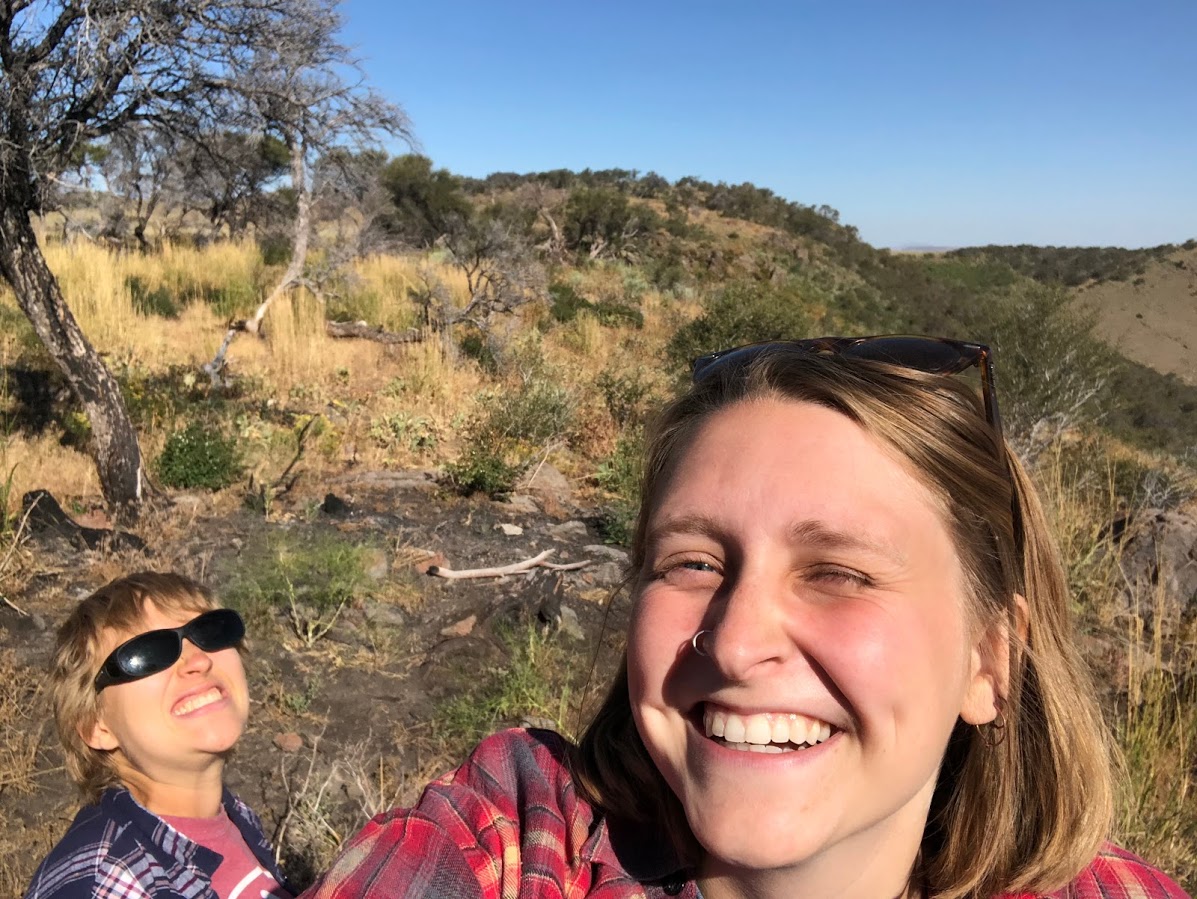
We are officially wrapping up the last few things for the season. The coming end has filled me with a mixture of accomplishment, pride, joy, but also sadness. It is a day that I didn’t think would come so soon and as quickly as it did… yet, here it is. In spite of, it being a relatively sad time, it is also a time of reflection. To reflect upon what I have done, how I got here, and what the future may have for me moving forward.

It truly says something when you are out in the field and wild places when as though by magic you begin to recognize the intricate patterns of native plant populations. You build an intimate relationship with them and quickly realize some of their favorite “haunts”. Silver-leaf Phacelia prefers the comforts of forested habitat, Erigeron pumilus and Machaeranthera canescens, however, prefer the rugged and rocky landscape of the open country. It dawned on me only after the fact that our success may be due in part to our ability to recognized the terrain and habitat type.
The irony, however, of these “wild-places” is that we never exist in isolation. It was very common for us to work with project partners or even run into other people out to enjoy the area or even living out there. These are some of my fondest memories, sharing passions with other people. We spoke often with landowners and the general public, and every time we found that people were excited to see us. It just goes to show that regardless of where we stand we often have the same goals, protect our natural areas. It is just our motivations and how we plan to get there that is the difference.
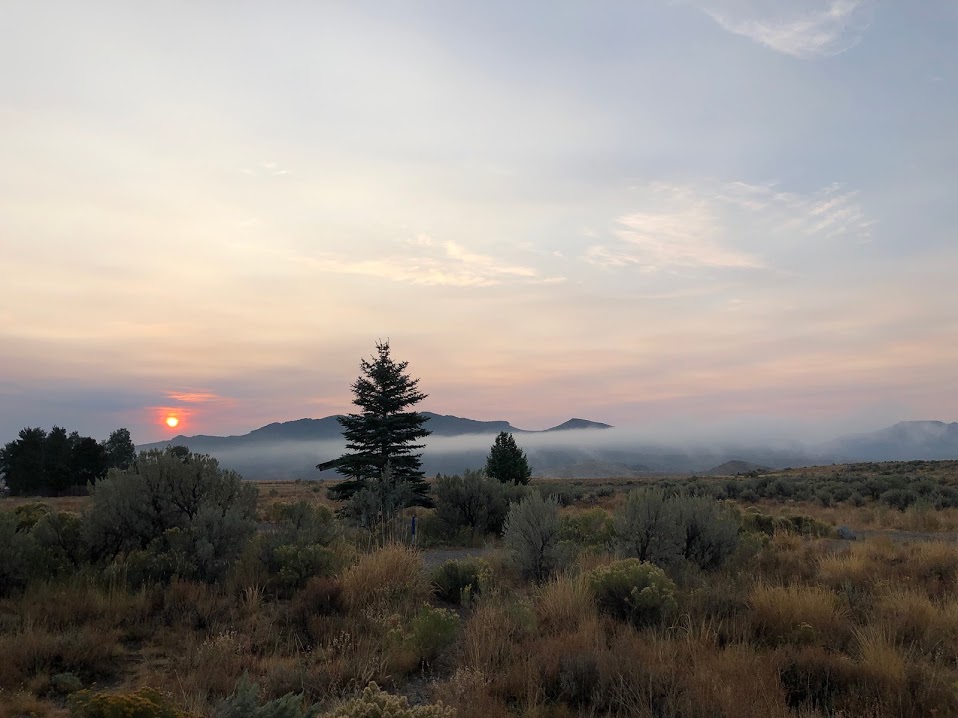
I studied as an ecologist in my college years and, was a specialist in invasive species (primarily insects, trees, and herbaceous plant material). I, however, had never in my wildest dreams believed that I would move out West to Nevada and begin my career here. The people I have met and the skills I have groomed have changed me, on a deeply personal and professional level. I have learned how to utilize GPS software and programs in ways I didn’t realize were possible. I learned about population viability beyond a calculation standard for the classroom. Most importantly I think, I met people, people who are as passionate and driven as I am to dedicate themselves to this lifestyle. Determined to leave the world better than when they found it.
I don’t know what the future holds for me but, I am glad to have been apart of the S.O.S. program. I am grateful for all the opportunities that presented itself to me, the people whom lives I affected and those who affected mine, and also for rekindling my spark for conservation in a time of pure uncertainty. I hope that I can return to the CLM internship program to continue to work and continue to make this world a better place one day at a time.
Happy trails and may we meet again.
Thanks for the Memories Nevada
As my internship comes to close this month I can’t help but feel fortunate for all I have seen and learned throughout my five months in Nevada. When I made the decision to move across the country for this position, I had no idea that it would entirely shift where I intend to take my career and the direction I wish to move in professionally.
Not only did my internship allow me to hone in on my technical and communication skills, but it has also opened up my eyes to see the need for native plant materials development in the Great Basin and elsewhere. I had the unique opportunity to participate in a collaborative native plant materials development program between the Bureau of Land Management, US Forest Service, Rocky Mountain Research Station, Great Basin Institute, and Chicago Botanic Gardens! At the very least, this partnership has shown me the strength in collaboration and how much can be learned + accomplished through widespread stakeholder participation. Our approaches to conservation and land management become all the more powerful with diverse entities working towards a common goal!
My responsibilities have largely involved monitoring native plant populations throughout Nevada and making seed collections from native target species using the BLM’s Seeds of Success protocol. The larger collections my field partner and I collected will be used for restoration purposes in the Great Basin while our smaller collections will be used for research purposes to establish empirical seed zones for native Great Basin forbs. Empirical seed zones are delineated based upon the genetic diversity of populations and the various environmental + climatic variables that influence them. Different regions contain populations with similar environmental influences (i.e. aridity, fire regimes) and therefore, genetic make-up. These correlations are then used to delineate zones to aid in the effort to provide regionally appropriate seed in areas for restoration. So when an area in the Great Basin burns we can provide seed that has the genetic makeup best suited and able to adapt to the local environmental conditions. Which saves government time and resources overall!
Participating in this program has been life-changing for me. I strongly believe in the mission of Seeds of Success, a national program spearheading the development of native plant materials to be used for restoration to enhance ecosystem resilience and conserve the genetic diversity of our native plants. I intend to take all I have learned here to help implement these ideas in other areas across the country in need of regionally-appropriate native plant materials. As climate change threatens the resilience of ecosystems across the globe, the need for improving native plant diversity and the genetic diversity of populations is crucial.
Overall, I am so fortunate to have received this opportunity to work with CBG and the USFS in Sparks, NV. This has been one of the greatest professional development opportunities I have received and has been monumental in helping me on my path as an early-career scientist. I would recommend all recent graduates considering a career in natural resources to look into the Conservation Land Management program with CBG. I will carry all I have learned in this internship with me forever and look forward to future opportunities to apply what I have learned!
Thank you CLM and thank you Nevada! That’s a wrap!
Setting the S(t)age
Smokey Bear is a timeless figure none of us dare challenge. If we’re being honest, there isn’t single bear we would challenge. Throughout the decades we’ve all have that furry, clawed finger sternly shook in our direction. “Only You”… A simple phrase consisting of only a few words forever ring unwavering in the ears of all enjoying a trip into the wilderness. At least it should.
The Deschutes National Forest suffered an, thankfully relatively minor, incident from a lingering campfire that decided to take an early morning stroll in the woods. The consequence – acres, and acres of land left flattened, barren, and blackened. That furry pointing finger would promptly turn into a forceful throttle if the culprits responsible were discovered. It’s understood that accidents do occur, but due to unpredictable environmental conditions we see out of our windows today, the stakes are too high for any fault.
However! A disturbance, depending on how you look at it, is an opportunity to set a new foundation.
The acres lost, enjoyed by a variety of wildlife, particularly Sage Grouse, displaced their habitat. The burn returned nutrients to the soil, yes, but when native species are faced with invasives that don’t play by the rules, open fertile soil is seized before they can wrap their roots around it. In a game of Risk, Sage would have no means of defense. No lucky roll of the dice would thwart the efforts of the lawless invasive shrubs, and grasses. In other words, no real hope.
…That was until we came along.
Although my time at the Bend Seed Extractory is satisfyingly spent testing the various lots of seeds coming in, a change of pace is refreshing for anyone. Planting sage plugs to restore Sage Grouse habitat was an effort that needed no convincing. We were absolutely up for it. We packed our shovels, our lunches, and headed out with the district botanist.
Below are a few photos of our time spent out in the fields. The dust was in no short supply, and the sun may have been persistent in a cloudless sky, but we couldn’t have asked for more ideal high-desert Fall days.
(Not pictured: The ~2,000 plugs planted!)
So although we may not be present to see the results of our efforts, we left confident that they would not go unrewarded. I guess I’m slightly expecting an ice cream or something from Smokey.
From the Bend Seed Extractory
Corey Skeens
Boise Adventures!
As you all probably know, CLM interns are funded to go to a conference at the Chicago Botanical Gardens for a week. However, if you are like me and start your internship late and not in the summer months and miss this conference, take heart, there is additional funding available to go to a conference of your choice as long as it relates to your internship (phew). Therefore, hence the title, I am using this blog post to inform you about the conference I recently attended in Boise, Idaho!
I attended the Intermountain Plant Summit conference held at Boise State University this November. This was a three day long conference filled with speakers, poster presentations, and ended with a happy hour at a brewery! There were numerous interesting talks; however, the one I found most interesting was about gum weed. A plant most think of as a weed (obviously) and undesirable. However, someone (I can’t remember his name, eek), suggested gum weed be used for roadside regeneration. This is because it is for more fire tolerant than species such as cheatgrass and can outcompete species such as this. It was very interesting to hear someone take on a whole new perspective on a plant that most people had accepted as being a nuisance.
In addition, my manager at the Seed Extractory gave me and my fellow CLM intern a poster to present at the poster session. We got to present a poster containing a summary of the work we do at the Bend Seed Extractory and the steps it takes to clean seed.

Also, (because we have the best manager ever), we got to visit Lucky Peak Nursery. It’s right outside of the city and in a beautiful location. We received a full tour from staff on site and even got to see their smaller scale extractory in the basement of the Nursery.

All and all, this conference was a great learning experience and a chance to explore more out west! So, if you miss the Chicago conference take advantage of this funding!!
Bye
I’ve had a wonderful experience as a CLM intern here in Rawlins, Wyoming. I would like to thanks my mentor Frank Blomquist, my Seeds of Success partner Sydney, all of my coworkers here in Rawlins, Chris and Krissa in Chicago, and Leah in D.C. My experience would not have been possible without them.
I would like to include some notes for next year’s Rawlins interns:
- Join the softball team (Talk to J.W. Martin for details)
- The Peppermill has
the following deals:
- 50 cent wing on Wednesday
- 50 cent draft on Thursday
The following song quotes have been especially inspirational during my time as an intern:
- “You only need one chain, unless you’re two chains, then you can have two chains; but not more than that” (Hannibal Buress “Hannibal Interlude” Lil Dicky Professional Rapper 2015).
The above lyric emphasizes the importance of being content with what you have. This message resonated with me while I was living in government housing in rural Wyoming. I spent some of the best months of my life living in a double wide trailer with as many as 9 roommates.
- “Nothing like crying in a Subaru Crosstrek, life is an abyss half-filled with sadness” (Hobo Johnson “Subaru Crosstrek XV” The Fall of Hobo Johnson 2019).
This lyric relates more to the Buddhist tenant that, “Life is suffering.” One has to accept this as truth to move forward on the path to Nirvana. However, having a brand new Subaru Crosstrek XV makes life a lot more comfortable.
- “Do you remember how when you were younger the summers all lasted forever?” (Chance the Rapper and Death Cab for Cutie, “Do You Remember” The Big Day 2019).
I recently read Ray Bradbury’s novel Dandelion Wine (Doubleday 1957). One chapter concludes with the point that the present is eternal, in other words the summer does last forever. I have always been 22 years old and I always will be. A different person, who may share my name and some things in common with me, will be (knock on wood) an old man one day. A different person altogether was once a cute little baby (with a neck as soft as the suspension on the all new Subaru Crosstrek XV).
I am incredibly grateful for the opportunity I have had to work as CLM intern here in Rawlins, WY. I believe that my future self will be better for the experience.\
Cheers,
Zeke Zelman
Leaving Lander
Fall has arrived. The trees lose their leaves, outdoor activities die down, and the vitality of summer begins to fade. It seems like a fitting time for my internship to end. Like many endings, this one is bittersweet. In less than two weeks I’ll be leaving the charming town of Lander, Wyoming to make the long haul back to Cleveland, Ohio. I am excited to see family, and friends, and to move on to something new. Despite the stigma that has stuck with Cleveland since the Cuyahoga River caught fire…multiple times, it is a pretty great place (the watershed is much cleaner now). Anyway, I will certainly miss Lander. There are many places that I would feel some resistance to leaving after five months of creating memories, and building bonds, but Lander will always be special to me. As I first set eyes upon this storybook small town I felt a nostalgic, comforting warmth sprout inside of me. A handful of old buildings, historic landmarks, and a view of the Wind River Mountains provide the town with an unnecessary, yet welcomed boost in charisma. The weathered and wild appearance instill a sense of wonder about the events; proud and profoundly sad, that have shaped this place. Lander has just enough people to have a “Main Street”, a small strip of downtown. Most businesses, a few restaurants and bars, and a movie theater provide just enough excitement to pull people out of their cozy living rooms when the weather is not cooperating, or the vast swath of natural beauty that extends for miles beyond the town in all directions when sunshine is infinite.
It was surprising to me how outdoorsy a community of people can be. In the months when there’s not too much snow to leave your house, most people use their free time for camping, fishing, hiking, climbing, biking, and in the fall, hunting season begins. I consider myself a somewhat adventurous, nature-loving person, but the people in Lander are on a different level. If the weather is nice, it can be assumed that everyone is outside. Some indoor activities cease to exist in the summer. Businesses even shorten their hours to accommodate for the lack of…business. Bar trivia no longer exists, an evening yoga class is nowhere in sight, and one gym that I looked into joining closed at 7pm on weekdays and was closed for the weekends – summer hours. It seems like even after a long day of work, people just want to ride their bikes or hangout up in the mountains.
While I feel like a sloth compared to the people here, I am definitely going to miss all of the opportunities that the landscape has to offer. Granted, the winters are long and cold in Wyoming (maybe that’s why people are so active when they can be), the majesty of nature has no rival anywhere near Cleveland. Sinks Canyon State Park, only a 10 minute drive away, would be a gem in Cleveland. In Wyoming it’s just a drop in the bucket of magnificent landscapes. I will long for this wild land, and the sense of freedom it provides. If I want to get away from people, all I need to do is drive out of town. In 5 minutes I’ll see sagebrush, open land, blue skies and maybe some pronghorn; a landscape that immediately puts me at ease. Once I leave here, I won’t be able to wake up, and on a whim, drive to see the vivid colors of fall beneath the awe-inspiring snow caps of the Tetons. Even if a hike here fails to provide a moose, or bear sighting, the chance to walk amid these beautiful mountains makes the day an unfaltering success. The wonders are not limited to Wyoming. A long weekend makes a good time to trek to the bordering states of Utah, Colorado, Montana and Idaho (There’s a lot more to Idaho than just potatoes). Even before I came to Wyoming, the forested parks in Cleveland occasionally provided a peaceful retreat from the stresses of life, but I was never really drawn to them. I fear that living surrounded by the picturesque lands of Wyoming has created something in me that will leave a void once I depart.
All in all, I had a great experience in Lander. I learned a great deal about range land management, the ecology of South-Central Wyoming, and Wyoming in general. My position as Range Monitoring Intern pushed me out of my comfort zone and exposed me to a new realm of natural wonders, people, and experiences. I would recommend this experience to most people, regardless of their background. I’ve gotten to know myself better, and feel as though I have lived life right for the past 5 months.

